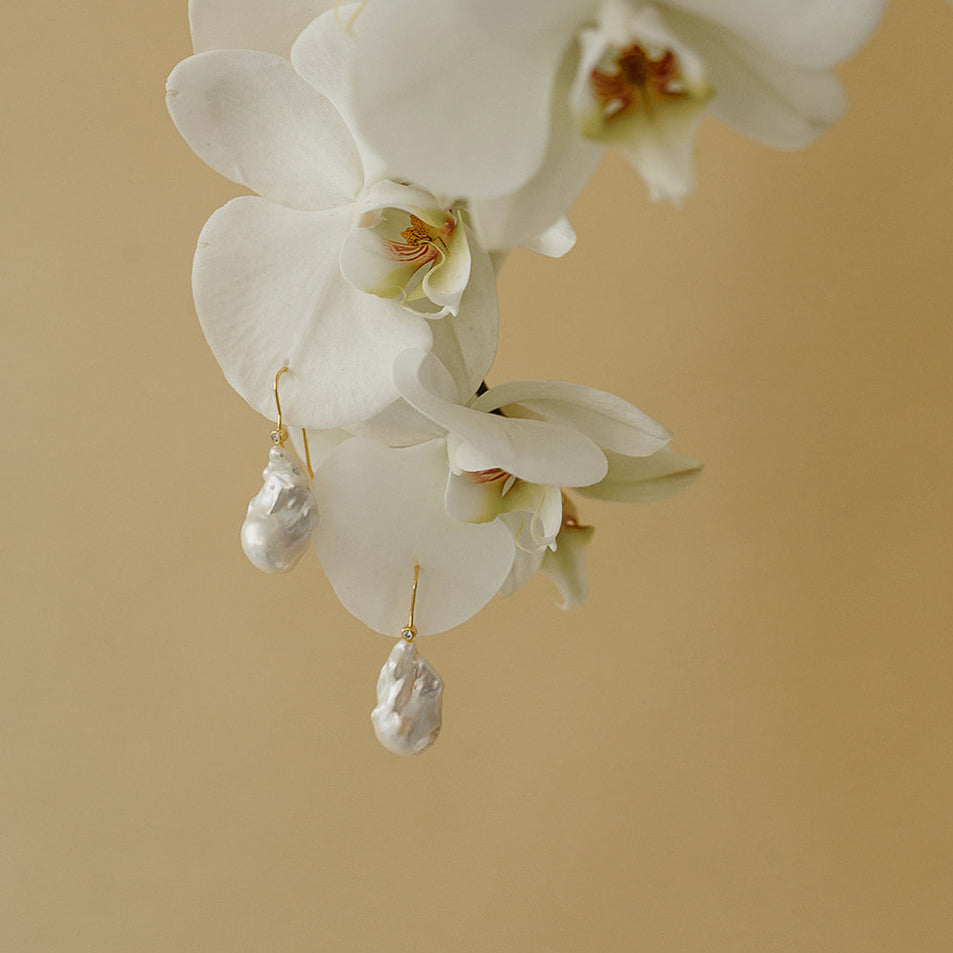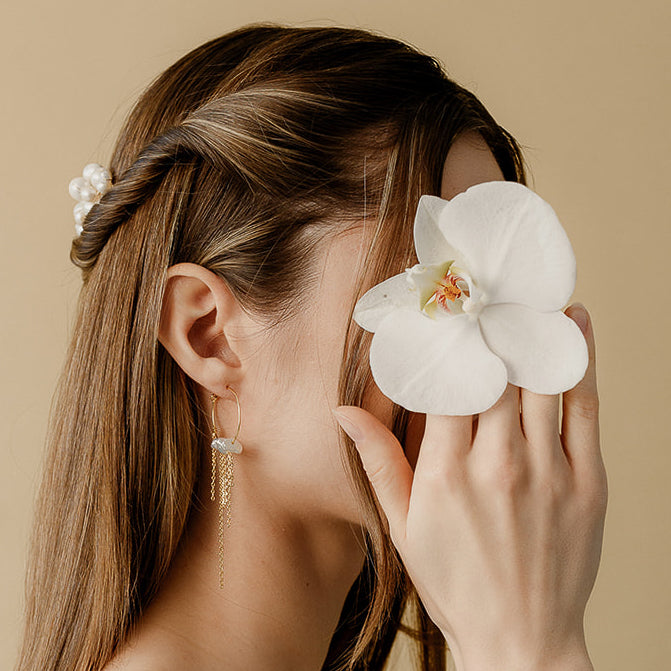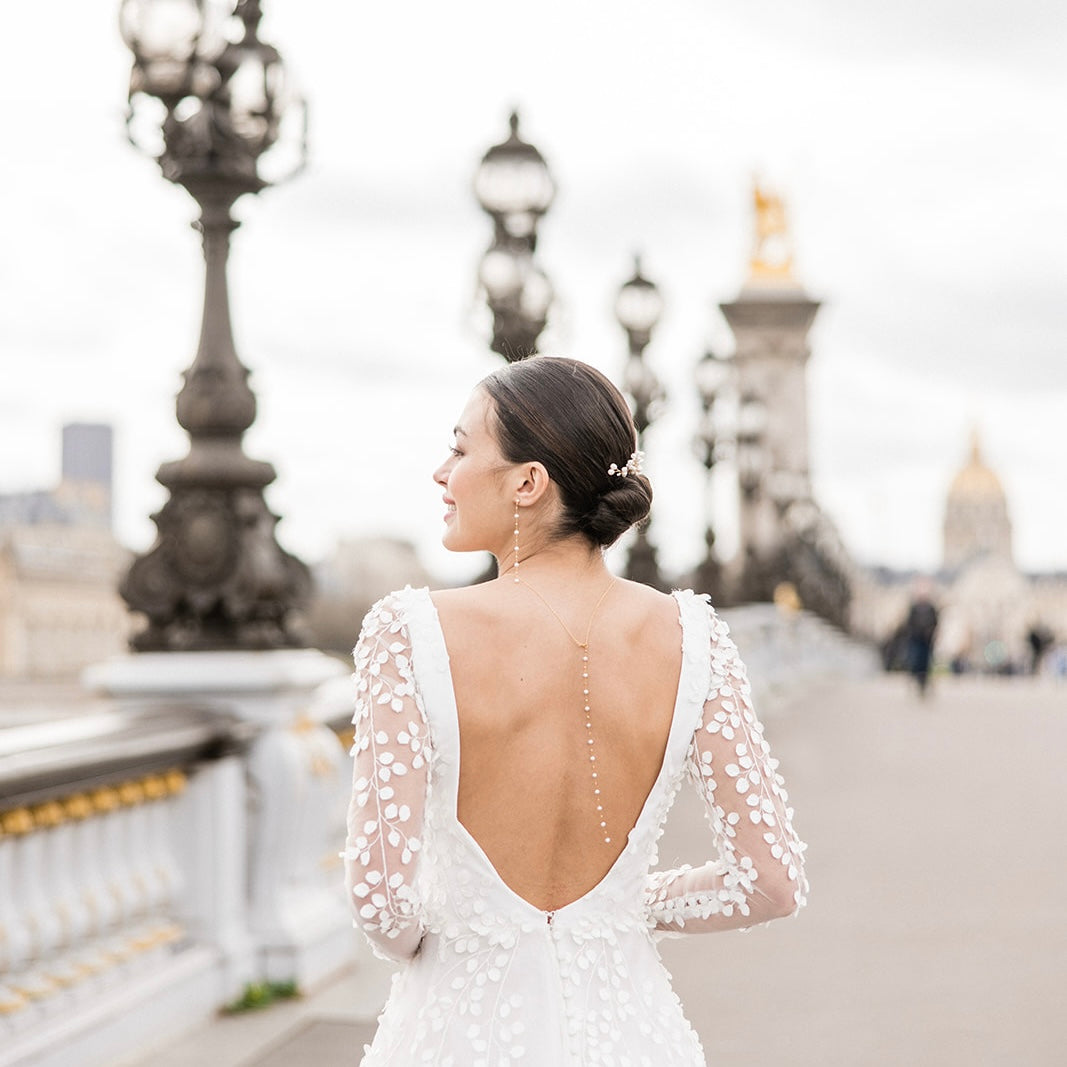How to take care of your gold-plated or 925 silver jewelry?

Gold-filled and gold-plated
What is ¨Gold-filled¨ ?
Gold-filled is one of the most used finishes in the manufacture of our earrings, necklaces, back necklaces and bracelets. This name comes from a technique originating in the United States and refers to the thickest possible gilding. It literally translates to "filled with gold". Unlike gold plating, gold-filled presents a layer of gold that penetrates deeply and forms a solid and thick envelope on the base of the jewel. This finish therefore tends to be more durable and resistant.
What is gold plating?
Gold plating consists of placing a thin layer of gold on the base of the jewel. In France this layer corresponds to a minimum thickness equivalent to 3 microns of gold deposited on a resistant metal which can be copper, zinc, brass or silver. Gold-plated jewelry has the advantage of resembling those made from pure gold with the advantage of being much cheaper. Attention, there is a third type of gilding, gilding with fine gold, this plating corresponds to an even finer layer of gold.

How do I maintain my jewelry?
Gold-plated and gold-filled jewelry can tarnish and chip over time, so it needs special attention from time to time. With regard to cleaning, care is taken to remove dust and potential traces by gently rubbing the surface of the jewel with a cotton ball or a soft microfiber cloth . The latter also makes it possible to bring shine to the metal. When your jewelry begins to tarnish, you can soak your jewelry for a few minutes in hot soapy water and rub it with your fingers or a soft brush. Avoid using too abrasive sponges and jewelry cleaners or anti-bacterial soaps that may contain harmful components. Finally, to avoid scratches and knots, wrap your jewelry in their pouches or in individual boxes.

925 silver and rhodium
When we talk about a silver jewel several are the possible finishes. At Atelier Lilac, we use three types of silver color finishes, 925 silver, rhodium plated and silver plated.
What is 9 25 money ?
925/1000th silver also called solid silver is a precious metal widely used in jewelry. It is made of 92.5% pure silver and 7.5% other metals, most often copper. This alloy makes the silver harder and thus easier to work with. Most of the chains used in the manufacture of our silver necklaces, bracelets and earrings as well as the bases of our silver earrings are made of solid silver.
How do I maintain my 925 silver jewelry?
Non-rhodium plated silver will inevitably tarnish and blacken over time. Its oxidation is a natural phenomenon which only takes place at the level of the surface of the material and in no way alters the quality of the product. The acidity of the skin of the person wearing the jewelry is one of the factors that accelerate its aging. Fortunately, it is very simple to restore its shine by cleaning it regularly with a soft cloth or chamois leather. You can also use a product suitable for silverware, available in supermarkets. Finally, avoid wearing your jewelry in the shower and putting it in contact with chemicals. If it has come into contact with water, be sure to wipe it dry.
The silver plated and rhodium plated
There is a silver-colored plating which provides a finish similar to that of 925 silver with the advantage of being more resistant and less prone to oxidation, it is rhodium-plated. It is true that the tone of the color is not as clear as that of silver jewelry, but rhodium jewelry does not darken over time or with contact with skin or other altering substances.
Finally, comes the silver bath that we only use for our barrettes and elastics. We cover our structures made of bronze with a layer of silver in order to obtain this smooth and silvery finish.
How to take care of plated jewelry?
Gold, silver and rhodium baths are not eternal. They tend to wear out over time, friction and shock. It is for this reason that everything that could erode the layer must be avoided as much as possible. As with gold baths, we advise you to soak your jewelry in hot water with a little soap, then wipe it gently. Immediately afterwards, to gain shine, we invite you to rub your jewelery with a soft chamois leather.
What to remember:
1.
Keep your jewelry individually in their original packaging.
2.
Avoid chemical products, such as perfumes, creams, shower gels...
3.
To preserve the shine of your jewellery, avoid contact with water such as in the swimming pool or the sea.
4.
Remember to take off your jewelry during your sports sessions and before sleeping.







